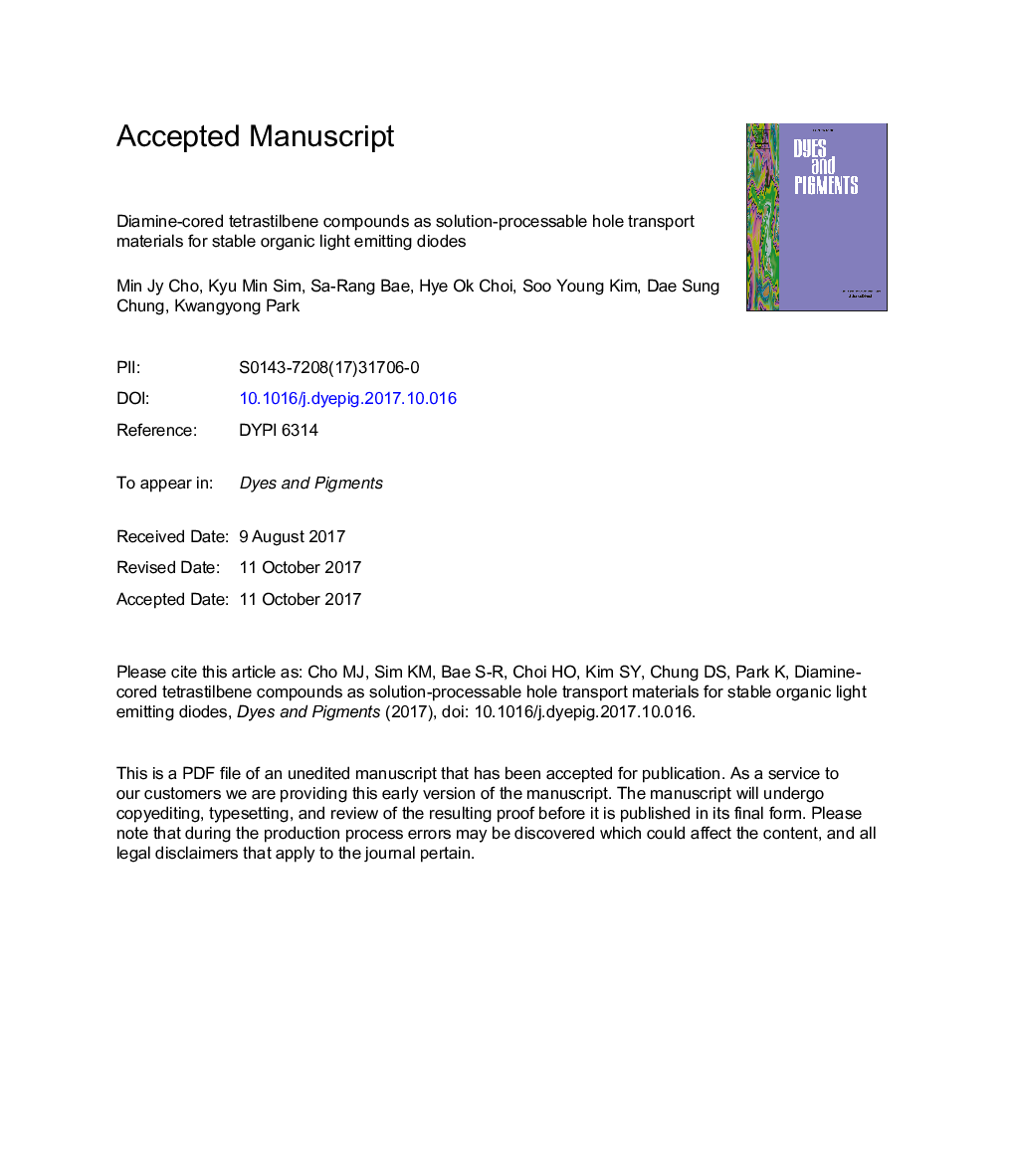| Article ID | Journal | Published Year | Pages | File Type |
|---|---|---|---|---|
| 6599466 | Dyes and Pigments | 2018 | 11 Pages |
Abstract
A series of diamine-cored tetrastilbene (DTS) derivatives bearing various aliphatic and aromatic substituents was designed and synthesized for use as solution-processed hole transport layers (HTLs) in organic light emitting diodes (OLEDs). The chemical structures of the DTS derivatives were strategically designed to increase solubility in organic solvents as well as to avoid self-crystallization, and thus ensure a stable morphology under Joule heating while maintaining efficient hole transport capabilities. The five DTS derivatives, composed of different conjugation structures, yielded reasonably good hole transport behavior with a marginal charge carrier mobility of â¼10â5 cm2Vâ1sâ1, which is similar to that of vacuum-deposited N,Nâ²-bis(1-naphthyl)-N,Nâ²-diphenyl-1,1â²-biphenyl-4,4â²-diamine (NPB). Due to the high glass transition temperatures of the DTS derivatives, this satisfactory charge transport behavior and smooth surface morphology were conserved up to 180 °C. Green OLEDs were prepared using tris-(8-hydroxyquinoline) aluminum (Alq3):C545T as the emission layer, and the OLED performances of the solution-processed DTS HTLs and the vacuum-deposited NPB HTL were compared. A high luminance efficiency of 11.5 cd Aâ1 was obtained for one solution-processed DTS HTL, which exceeds that of the NPB HTL (10.01 cd Aâ1). Furthermore, the DTS HTLs enabled a stable OLED operation, with double the accelerated half-life of the NPB-based device.
Related Topics
Physical Sciences and Engineering
Chemical Engineering
Chemical Engineering (General)
Authors
Min Jy Cho, Kyu Min Sim, Sa-Rang Bae, Hye Ok Choi, Soo Young Kim, Dae Sung Chung, Kwangyong Park,
